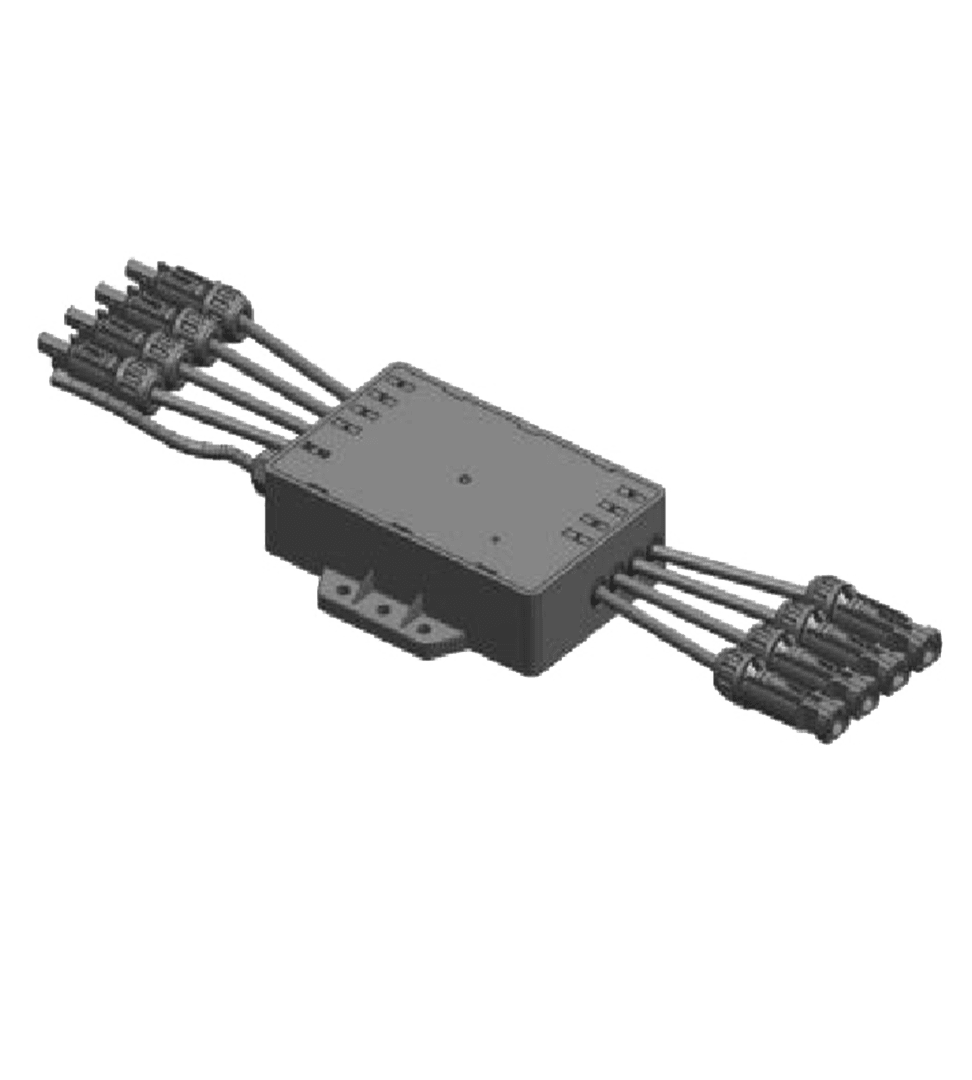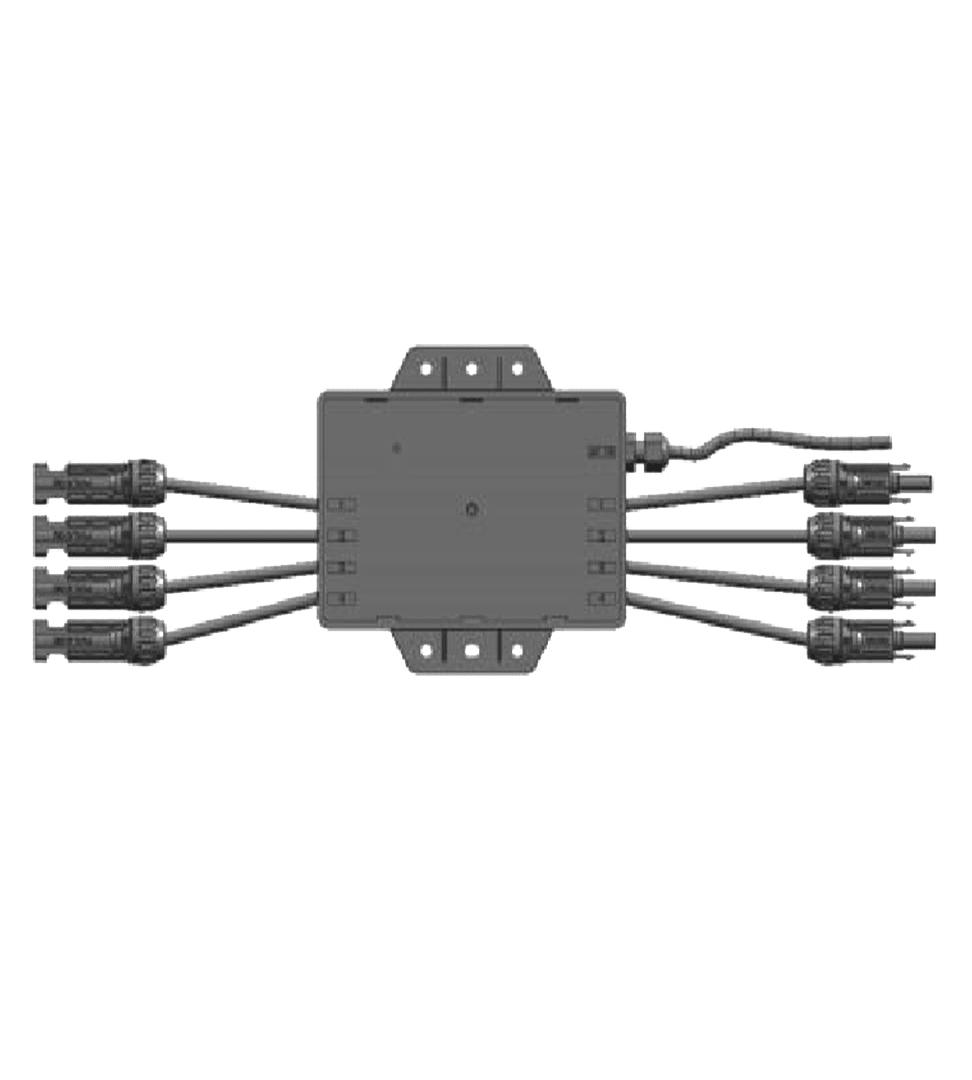The shutdown controller (Gateway) controls the module-level PV shutdown on or off via a DC power line carrier (PLC), enabling module-level shutdown in the event of an emergency such as a fire or installation O&M, meeting NEC 2017 690.12 standards, so that PV systems do not have DC voltages above 80 Vdc, ensuring the personal safety of firefighters and site O&M personnel.
Reliability Safety Capacity
Shutdown Controller (Gateway)




Shutdown controller (Gateway)
Leading Features
- High reliability and interference immunity.
- Meeting the NEC 2017 690.12 standard.
- Meets SunSpec standards (optional).
- Easy installation and operation.
- IP67 protection level.
- Power line carrier (PLC) communication, using existing wiring, no additional wiring required.
| Model | Transmitter | Unit |
| Input/output parameters | ||
| AC input voltage | 85~264 | Vac |
| Max system voltage | DC 1500 | Vdc |
| Max current per channel | DC 20 | A |
| Conformity | ||
| Electromagnetic compatibility (EMC) | IEC61000-6-2, IEC61000-6-3, | |
| IEC61000-3-11, IEC61000-3-12, | / | |
| FCC Part15 ClassB | ||
| Safety | IEC-62109-1/2 | / |
| RoHs | Certified | / |
| Installation specifications | ||
| LxWxH | 169X146X35 | mm |
| International Protection | IP67 | / |
| Operating temperature range | -20~+65 | ℃ |
| Cooling method | Natural cooling | / |
| Installation form | Hanging wall/holding column | / |
Due to the renewable and clean nature of solar energy, grid-connected photovoltaic (PV) power generation technology has developed rapidly. PV systems are usually composed of multiple PV modules connected in series to form a PV module string, which is then connected to a PV inverter, which converts the DC power output from the PV module string into AC power and is connected to the grid. The high DC voltage output from the PV module string can lead to personal danger and fire accidents. And the on-site PV system requires the PV inverter to have anti-arc protection, which means that the operation of the PV inverter needs to be shut down immediately when an arc is detected. However, even if the PV inverter stops operating, the DC cable behind the PV module string will still have DC high voltage, which is a safety risk.
In the prior art, shut-offs are usually added after each PV module, and the output of each shut-off is connected in series to the PV inverter to ensure that each PV module is connected in series. Each shut-off is controlled by a shut-off controller, and when the PV inverter needs to be shut off, it will connect the shut-offs connected after each PV module accordingly to reduce the voltage on the DC cable.

